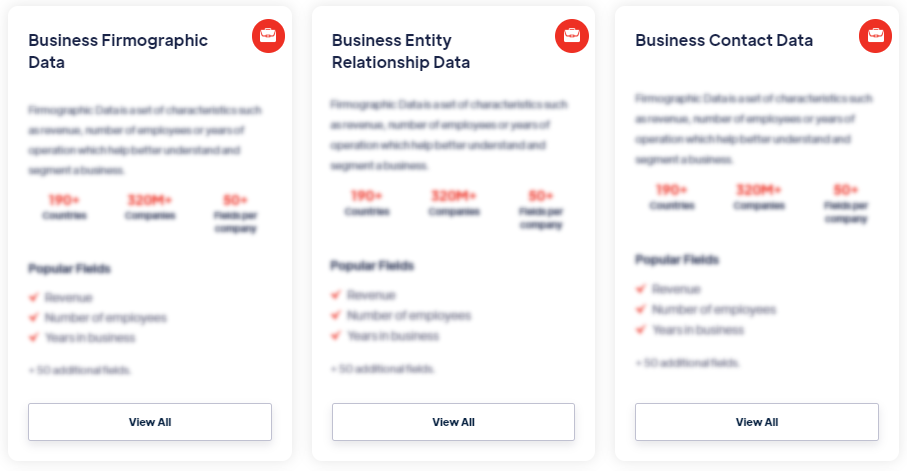Best
LinkedIn Profile Data
Products
LinkedIn Profile Data refers to the information and content displayed on an individual's LinkedIn profile. It includes details such as the user's name, profile picture, headline, summary, work experience, education, skills, endorsements, recommendations, certifications, interests, and contact information. It provides a comprehensive overview of an individual's professional background and qualifications. Read more
Our Data Integrations


Request Data Sample for
LinkedIn Profile Data

Browse the Data Marketplace

Frequently Asked Questions
1. What is LinkedIn Profile Data?
LinkedIn
Profile Data refers to the information and content displayed on
an individual's LinkedIn profile. It includes details such
as the user's name, profile picture, headline, summary,
work experience, education, skills, endorsements,
recommendations, certifications, interests, and contact
information. It provides a comprehensive overview of an
individual's professional background and qualifications.
2. How is LinkedIn Profile Data collected?
LinkedIn Profile Data is primarily collected when users create
and update their LinkedIn profiles. Users input information
about their work history, education, skills, and other relevant
details. They can also choose to add additional sections, such
as certifications, languages, projects, publications, and
volunteering experience. The data is collected directly from the
users and is managed by them on their profiles.
3. What types of information are included in LinkedIn Profile
Data?
LinkedIn Profile Data includes various types of information
about an individual's professional background and
qualifications. It includes the user's work experience,
including job titles, companies, employment dates, and job
descriptions. It also includes educational details, such as
degrees earned, educational institutions attended, and areas of
study. Skills, endorsements, recommendations, certifications,
and other sections provide additional insights into an
individual's expertise and professional accomplishments.
4. How is LinkedIn Profile Data used?
LinkedIn Profile Data is used by individuals to build their
professional network, showcase their skills and experiences, and
connect with potential employers, clients, or collaborators.
Recruiters and hiring managers use LinkedIn Profile Data to
search for and evaluate potential candidates for job
opportunities. It also serves as a reference for professional
networking, business development, and industry research
purposes.
5. What are the benefits of analyzing LinkedIn Profile
Data?
Analyzing LinkedIn Profile Data can provide valuable insights
into an individual's professional qualifications,
expertise, and career progression. It allows recruiters and
hiring managers to assess a candidate's suitability for a
particular role based on their skills, experiences, and
recommendations. Professionals can use the data to identify
career opportunities, connect with industry peers, and showcase
their expertise to a broader audience.
6. What are the challenges with LinkedIn Profile Data?
Challenges with LinkedIn Profile Data include data accuracy and
reliability. As users manage and update their profiles
themselves, the accuracy and completeness of the information may
vary. Users may also have different preferences regarding the
level of detail they provide on their profiles, which can impact
the consistency of the data. Privacy settings set by users may
restrict access to certain profile information, limiting its
availability for analysis.
7. How is LinkedIn Profile Data evolving?
LinkedIn continuously introduces new features and updates to
enhance the profile-building experience and provide more value
to its users. The platform offers users the ability to add
multimedia content, such as images, videos, and presentations,
to their profiles. It also provides features like skills
assessments and the ability to follow hashtags and topics of
interest. LinkedIn regularly updates its user interface and adds
new profile sections to adapt to the changing needs of
professionals and recruiters.
